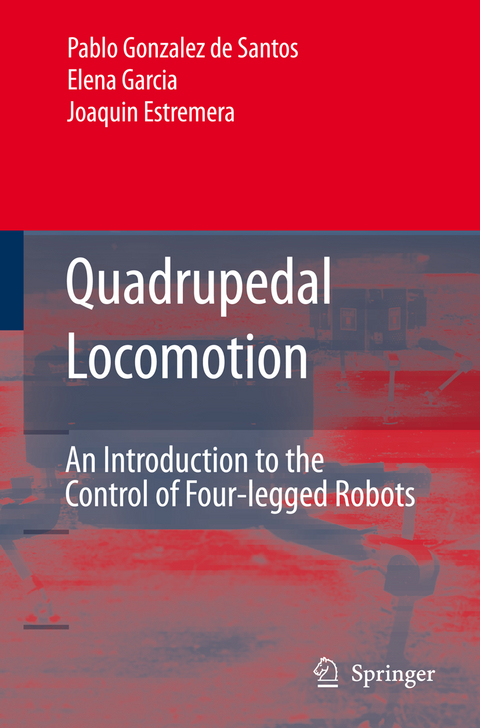
Quadrupedal Locomotion
Springer London Ltd (Verlag)
978-1-84996-576-7 (ISBN)
Legged robots have proven to be a promising locomotion system, capable of performing tasks that conventional vehicles cannot perform. Even more exc- ing is the fact that this is a rapidly developing ?eld of study for researchers from a variety of disciplines. Over the past three decades, legged locomotion technology has been developed all over the world, resulting in the invention of many important new machines and methods. However, only a few books have been published on the subject of multi-legged robots. The main objective of this book was to explore some of the major issues that the authors have been analyzing over the past ten years. A second objective was to write a book that only encompasses quadruped locomotion, the ?rst specialized book on this topic. The book is divided into two parts: Walking Measurements and Algorithms, and Control Techniques. The ?rst part is devoted exclusively to the theoretical aspects of quadrupeds. The ?rst chapter is an introduction to the historic development of multi-legged robots, highlighting their advantages and disadvantages, main features, and potential and actual applications, as well as discussing basic concepts and the trade-o? between quadrupeds and hexapods. Finally, new and traditional stability measurements and gait g- eration algorithms for quadrupeds are explained. The second part of the book deals with general design and control algorithms (kinematics and dynamics) and techniques aimed at improving the main features of robots, such as speed and ground detection, interfaces,etc.
The authors work at the Department of Automatic Control of the Industrial Automation Institute (IAI), which belongs to the Spanish Council for Scientific Research (CSIC). Over the past ten years, they have been involved in the research of walking robots techniques and have participated in the design and manufacturing of up to six different legged robots (climbing and walking) for diverse applications including ship building, terrain consolidation in civil-engineering works, educational robots and humanitarian demining. One of those robots (SILO4) is the basic model for simulation (geometric model) and experiments (real model) and there exist three replicas of this design which are owned by IAI-CSIC (Spain), University of Bourges (France) and University of Murcia (Spain). This robot is used for education and basic research purposes at these universities. The design drawings and some manufacturing hints are provided on the internet for those researchers willing to manufacture their own replicas. The basic material of this book is the result of four Ph.D. theses and three M.Sc. theses developed and/or advised by this book’s authors, who have also some international experience: Dr. Gonzalez de Santos worked at the Robotics Institute (Carnegie-Mellon University) as a visiting scientist where he was involved in the development of the AMBLER walking robot; Dr. Garcia worked at the Leg Laboratory of the Massachusetts Institute of Technology as a visiting scholar where she was involved in the study of dynamic aspects of legged robots and Dr. Estremera is currently working at the University of Stanford (CA) with Professor Waldron, one of the most prominent researchers in legged locomotion.
Walking Measurements and Algorithms.- Walking Robots.- Stability in Walking Robots.- Generation of Periodic Gaits.- Generation of Non-periodic Gaits.- New Approaches to Stability.- Control Techniques.- Kinematics and Dynamics.- Improving Leg Speed by Soft Computing Techniques.- Virtual Sensors for Walking Robots.- Human-machine Interfaces.- The SILO4 Walking Robot.- Simulation Software for Walking Robots.
| Erscheint lt. Verlag | 14.3.2012 |
|---|---|
| Zusatzinfo | XIV, 268 p. |
| Verlagsort | England |
| Sprache | englisch |
| Maße | 155 x 235 mm |
| Themenwelt | Informatik ► Theorie / Studium ► Künstliche Intelligenz / Robotik |
| Technik ► Elektrotechnik / Energietechnik | |
| Technik ► Maschinenbau | |
| ISBN-10 | 1-84996-576-5 / 1849965765 |
| ISBN-13 | 978-1-84996-576-7 / 9781849965767 |
| Zustand | Neuware |
| Haben Sie eine Frage zum Produkt? |
aus dem Bereich


